When in season and when you get the right variety, mangoes are some of the most delicious fruits you can ever have. Sweet, juicy, and creamy, mangoes can be enjoyed on their own, used in desserts and other sweet recipes, or used as a refreshing ingredient to brighten up your savory dishes.
Aside from this, it also boasts some awesome health benefits. If you are curious to learn more about this wonderfully delicious and versatile tropical fruit, read on!
What Is Inside A Mango?
A mango is made up of three parts – the peel, the pulp and the seed. The pulp or flesh is usually the main attraction but the peel and the seed also have interesting culinary uses.
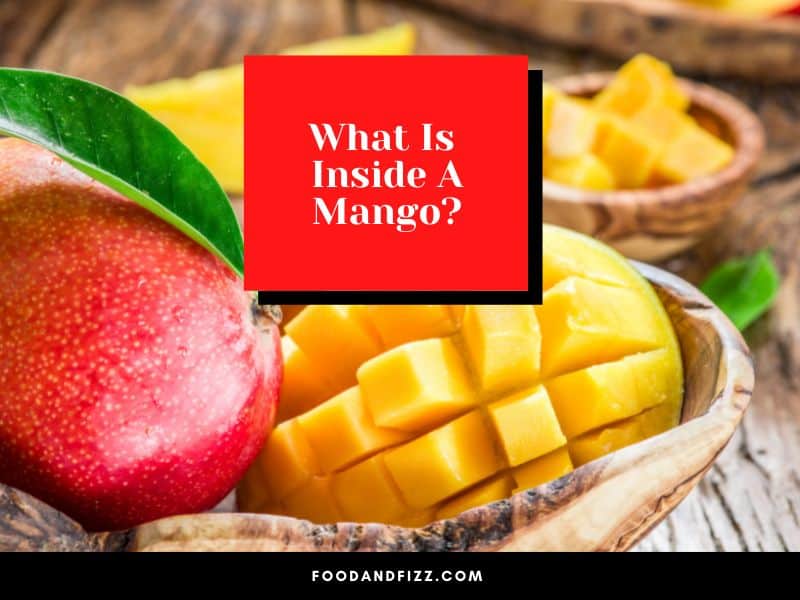
What Are Mangoes?
Mangoes are tropical fruits that originally came from India and Southeast Asia. They belong to a botanical family known as “drupes” or stone fruits.
These types of fruits, in botanical definitions, contain a single seed that is encased in a hard pit called an endocarp, surrounded by an outer fleshy part called a mesocarp. Examples of other drupes include plums, peaches, cherries, and olives.
The flesh of the mango is usually yellow in hue, but its outside skin, depending on the variety, can range from red, yellow, orange and even green.
Known as “The King of Fruits” in some parts of the world, mangoes are one of the most widely grown and widely cultivated tropical fruits in the world. It features prominently in Indian, Southeast Asian and South American cuisine.
Where Do Mangoes Grow?
Mangoes are the fruits of trees called Mangifera indica. These trees live for a very long time and can grow quite large, easily reaching 100 feet tall.
Mango trees thrive in tropical climates. They really are warm-weather trees and cannot survive at temperatures lower than 30°F. This is why they cannot be grown in areas that experience any type of frost.
In the U.S., mangoes are grown mostly in the southern parts of Florida and California, also Puerto Rico and Hawaii. Outside of the U.S., in areas like India and the Philippines, mangoes are pretty much cultivated year-round, with mangoes tasting their best and their sweetest during the peak harvest periods.
What Is Inside A Mango?
When you cut open a mango, you will see that it has three main parts – the skin, the flesh and the pit.
The skin or peel is what is known as the epicarp, which is the external layer of the fruit. The middle layer is known as the mesocarp, which is the flesh or pulp and what we think of when we think of edible fruit. The seed or pit is what is known as endocarp.
In ripe mangoes, the pit or endocarp is usually tough and bitter so it is usually discarded, but unripe mango pits are softer, and can easily be worked with. All parts of the mango are edible, from skin, to flesh to seed kernel.
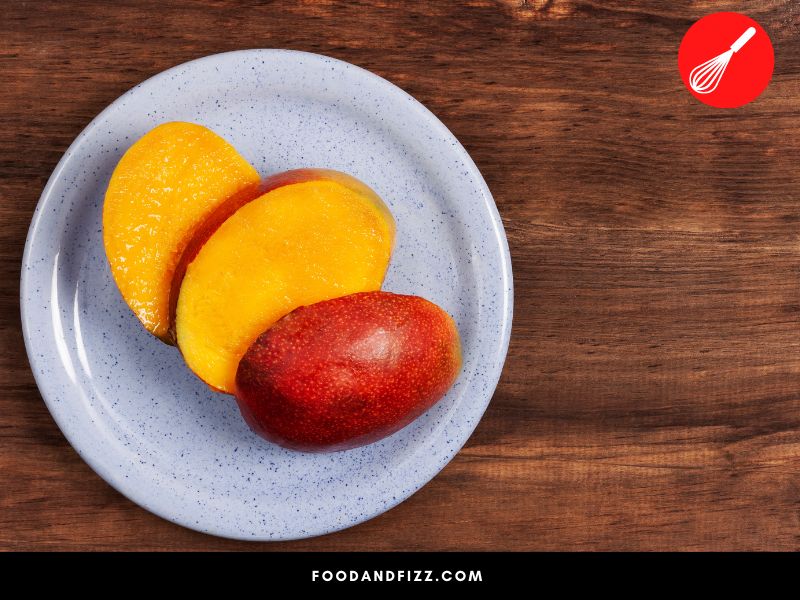
Types of Mangoes
There are hundreds of varieties of mangoes in India alone, and hundreds more that are cultivated all over the world. In this section, we’ll take a look at some of the more popular varieties of this sweet, delectable fruit.
1. Alphonso
If mangoes are the “King of Fruits”, Alphonso mangoes are known as the “King of Mangoes”. They are perhaps one of the finest and most sought-after mango cultivars in the world.
Despite its Spanish-sounding name, Alphonso mangoes actually hail from Maharashtra in India. They were named after a Portuguese man named Afonso de Albuquerque, an appointed viceroy of Goa and Bombay in the 1500’s. The Portuguese were the ones who taught the technique of grafting, which allowed various mango cultivars to be produced in that area, including the Alphonso.
Alphonso mangoes have a yellow-orange skin color with a tinge of red, and their taste is described as sweet, smooth, and buttery, with a hint of honey and citrus. They were once shipped to London for Queen Elizabeth’s coronation, making them hugely popular there ever since.
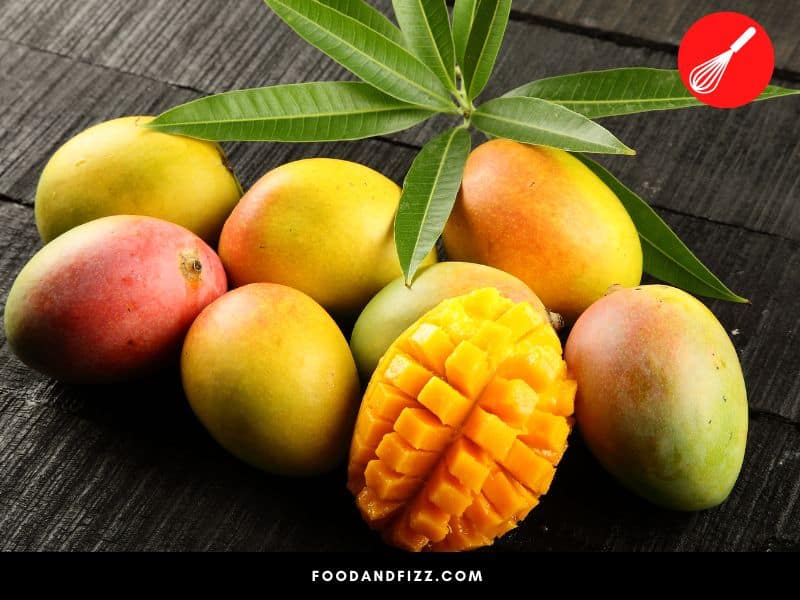
2. Tommy Atkins
The most popular mango cultivar in the U.S., Tommy Atkins mangoes originated in Florida and are also mostly grown there. It is said to be an offshoot of a Haden mango, discovered on the property of one Thomas H. Atkins in Ft. Lauderdale in Florida in the 1920s, giving it its unique name.
Tommy Atkins mangoes are oval-shaped mangoes that are largely reddish-orange in color with some tints of yellow and green. Their flesh is a golden yellow with a fibrous texture with a taste that is described as mildly sweet.
They have a thicker skin that helps protect the inner fruit, are highly disease-resistant, and have a longer shelf life than other cultivars, all pluses when it comes to shipping and exporting. Outside of the U.S., Tommy Atkins mangoes are also grown in Mexico, Peru, and Brazil.
3. Haden
The Haden mango was born in Florida in the early 1900s, in the household of Captain John J. Haden, a retired military man, which gave it its name. It is said to have been a cross between a Mulgoba and turpentine mango.
They are oval-shaped with red skin and shades of green and yellow. They look similar to Tommy Atkins mangoes with green and reddish hues at first but as they ripen, they turn into a more yellow shade.
They are described as having a sweet, rich, custard-like taste when they are fully ripe, with an amazing fragrance, but they can be bitter and tough when underripe.
They used to be cultivated more widely but tend to be prone to fungus which made them unattractive for growers. Today, they are mostly grown in Mexico.
4. Ataulfo or Honey
Ataulfo mangoes, also known as Honey mangoes, are yellow in color with an oblong shape with a sort of hook-like shape on one end. They originated in Mexico and are mostly cultivated there, too.
Ataulfo mangoes are said to have been descended from a mango cultivar from the Philippines, which was brought in through trade agreements between the countries in the 1700s.
Compared to other types of mangoes, their seeds are smaller, resulting in a higher ratio of flesh to seed. Their skin is a vibrant yellow and the flesh is sweet, smooth, and not fibrous. As it ripens, it turns a deeper golden color and may become wrinkled when approaching full ripeness.
5. Keitt
Keitt mangoes are some of the largest mangoes you can find, with some fruits weighing as much as 5 pounds. Unlike other mango varieties where you can guess what stage they are in terms of ripeness by their color, there is no other way to tell with the Keitt variety than by touch.
This is because their skin remains a green color even when they are ripe, ranging in color from pale to dark green. As it ripens, the flesh softens. The softer the flesh is, the riper the mango.
Keitt mangoes also originated in Florida (they sure love their mangoes over there!), and they are liked for their sweet and tart taste. Because they have a pleasant, tart taste while unripe, unlike other mango varieties, they are perfect for use in green mango recipes.
6. Carabao
According to the Guinness Book of World Records, the sweetest mango in the world is known as the Carabao Mango, a variant found in the Philippines. As someone who has experienced these carabao mangoes firsthand, this comes as no surprise to me.
Carabao mangoes, when you have the great fortune of having them in the peak summer months in the Philippines, are some of the most succulent, best-tasting mangoes you will ever have in your life. Just one bite of these juicy, sweet mangoes and you will never look at mangoes the same way again.
Interestingly enough, over there, locals enjoy eating it on its own both in its ripe and unripe states, which I know is enough to make you wonder, just how good is this carabao mango? If you ever have a chance to try them someday, I guarantee you won’t regret it.
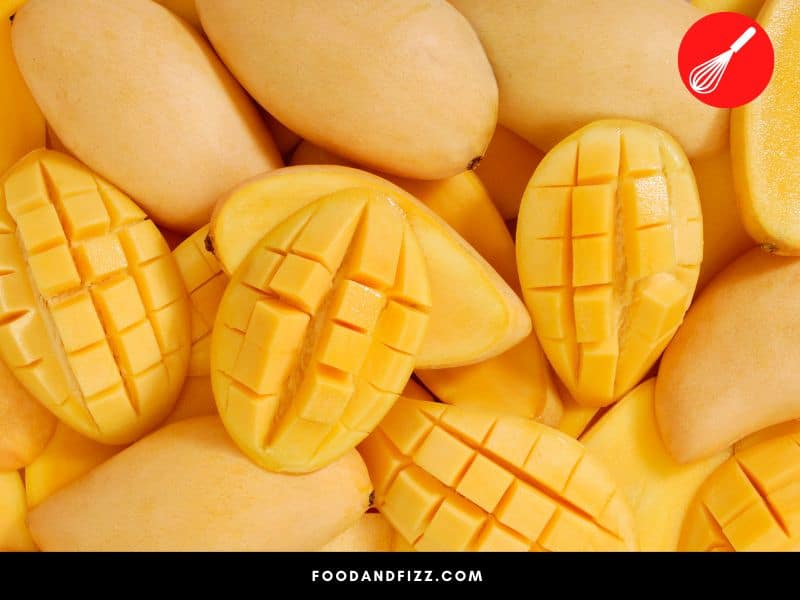
Ways to Use Mangoes
Mangoes can be used in a lot of different ways, both sweet and savory. You can dice, freeze and put them in your smoothies. You can add heavy cream and turn it into ice cream. You can make mango cake, mango pie, mango custard, mango mousse, and mango pudding.
You can make bread with it, add it to salads and use it in soups, serve it with chicken, fish, or burgers, and even make sushi with it. The possibilities in the kitchen really are quite numerous.
Mangoes can even be used to make curry.
Chef Sai Sabnis is a whole foods chef based in Goa and the founder of Sai & Posa Kitchen, a food service that promotes the tenets of healthy, mindful eating. She is a known mango fan.
When we asked her what she thought of mangoes, and her favorite dish to use them in, she told us this:
The delights of a ripe mango are obvious, whether by itself or in a dessert application, but I really also enjoy the particular sour flavor that comes from the unripe fruit. One of my absolute favs is a traditional coconut-based sweet-sour curry called uddamethi.
Chef Sai Sabnis is a whole foods chef based in Goa
Uddamethi is a Goan-style, traditionally vegetarian raw mango curry that is often prepared for festivals and special occasions but is surprisingly made with simple ingredients – raw, unripe mangoes, jaggery, a mix of spices, and a coconut-based gravy. It is said that the real star of the dish is the raw mangoes, which gives the dish its pleasantly tart taste.
I have never tried uddamethi but with Chef Sai’s enthusiasm for it, I certainly cannot wait to try!
Aside from the flesh, the skin of the mango can also be used to make mango chips, or boiled along with the pits to make fresh mango syrup. The pits can also be used to make infused cocktails or can be simmered into sauces. Dried mango seed kernels can also be ground up to make gluten-free mango flour.
Health Benefits of Mangoes
Mangoes are not only delicious but also have a ton of health benefits.
Some of them include:
- Rich in vitamin C, which promotes healing and immunity
- Contains anemia-preventing and bone-strengthening vitamin K
- Has a lot of antioxidants that fight off free radicals
- Rich in fiber
- Contains potassium and magnesium that regulates blood pressure
- Promotes heart health by reducing inflammation
- Contains polyphenols, which may lower the risk of certain cancers
No matter how good and healthy something is though, it is never a good idea to go overboard and consume more than what is necessary. Mangoes are higher in sugar compared to other fruits so especially if you are watching your sugar intake, it is best to take note of this.
However, it doesn’t mean it cannot be a regular part of your diet. As with anything, moderation is always key with these things. Combined with an active lifestyle and a diet incorporating various types of health-promoting food, mangoes can be part of a healthy, balanced diet.
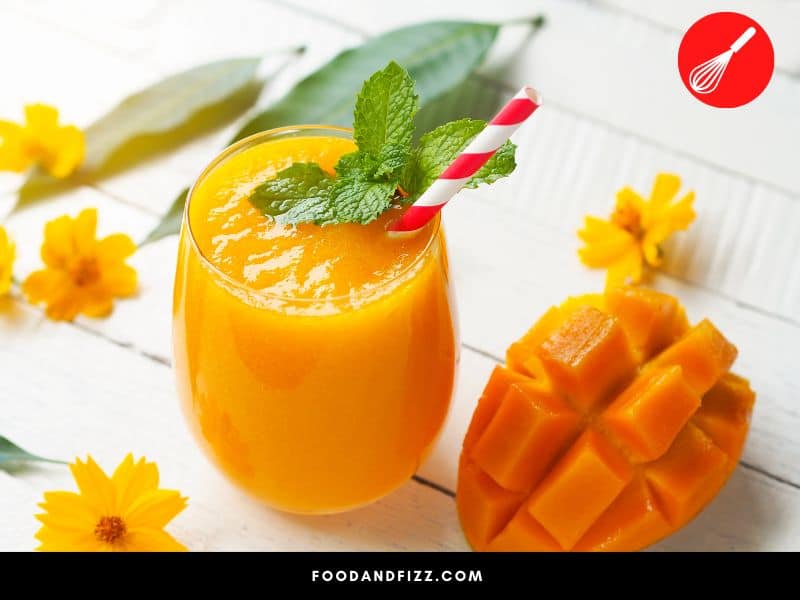
Frequently Asked Questions to What Is Inside A Mango?
How Do I Eat Mangoes With A Spoon?
To eat a mango with a spoon, leave the skin on and hold the mango vertically. Make a cut on either side of the pit, as close to the pit as possible to make two mango “cheeks”. Once you have your mango cheeks, you can scoop the mango flesh out and eat it with a spoon.
What Are the Uses of Mango Seeds?
Mango seeds can be used to infuse cocktails, can be simmered to add flavor to sauces, and can be dried up and ground to make mango flour.
Conclusion to What is Inside A Mango?
A mango has three parts – the skin, the flesh, and the pit. While the flesh is what most people focus on, the skin and the pit are also edible and can be used for a variety of things like infusing cocktails and making sugar syrups.
The flesh of the mango can be used in many sweet recipes, as well as savory recipes like curry. Mangoes are versatile whose sweet and tart flavors work well in many different recipes.

